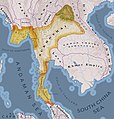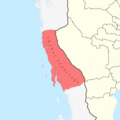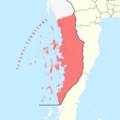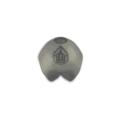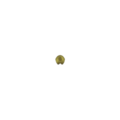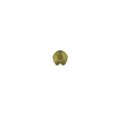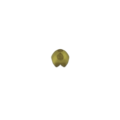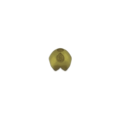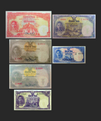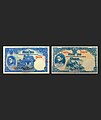User:Nicolaus Alden Ashvashchandr

This userpage is made by Nicolaus Alden Ashvashchandr. I am a user who dedicated himself to doing various projects and uploading them onto Wikipedia. I will be referring to myself in 3rd person because it sounds cool!
Born on 26 December 2002, he started his interest in astronomy at a young age. He started to draw maps of imaginary solar systems - even if it was broken beyond logic. This obsession developed into more of a fascination with maps, history and such. He brought various maps such as Auguste Pavie's series of maps published by White Lotus: Atlas of the Pavie Mission: Laos, Cambodia, Siam, Yunnan, and Vietnam. One of his close friends even gave him a book relating to history! The book was History of the World Map by Map. Ever obsessed with the machinations of the world, he enrolled in one of the many engineering schools. Studying engineering has given him an insight and a different perspective on how to worldbuild and conlang.
Userboxes[edit]
|
|
|
|
Etymology of the Pen Name[edit]
Caphtaain[edit]
It is derived from the English word captain. Originally from the Reddit user: Captaah.[1]
Reason[edit]
Interests[edit]
History[edit]
History (from Greek ἱστορία, historia, meaning "inquiry; knowledge acquired by investigation") is the study and the documentation of the past. Events before the invention of writing systems are considered prehistory. "History" is an umbrella term comprising past events as well as the memory, discovery, collection, organization, presentation, and interpretation of these events. Historians seek knowledge of the past using historical sources such as written documents, oral accounts, art and material artifacts, and ecological markers. [2]
Worldbuilding[edit]
Worldbuilding is the process of constructing a world, originally an imaginary one, sometimes associated with a fictional universe. Developing an imaginary setting with coherent qualities such as a history, geography, and ecology is a key task for many science fiction or fantasy writers. Worldbuilding often involves the creation of geography, a backstory, flora, fauna, inhabitants, technology and often if writing speculative fiction, different races. This may include social customs as well as invented languages for the world.
The world could encompass different planets spanning vast distances of space or be limited in scope to a single small village. World building exists in novels, tabletop role-playing games, and visual media such as films, video games and comics. Prior to 1900 most worldbuilding was conducted by novelists, who could leave imagination of the fictional setting in part to the reader. Some authors of fiction set multiple works in the same world. This is known as a fictional universe. For example, science fiction writer Jack Vance set a number of his novels in the Gaean Reach, a fictional region of space. A fictional universe with works by multiple authors is known as a shared world. One example of such is the Star Wars Expanded Universe.[3]
Maps[edit]
A map is a symbolic depiction emphasizing relationships between elements of some space, such as objects, regions, or themes.
Many maps are static, fixed to paper or some other durable medium, while others are dynamic or interactive. Although most commonly used to depict geography, maps may represent any space, real or fictional, without regard to context or scale, such as in brain mapping, DNA mapping, or computer network topology mapping. The space being mapped may be two dimensional, such as the surface of the earth, three dimensional, such as the interior of the earth, or even more abstract spaces of any dimension, such as arise in modeling phenomena having many independent variables.
Although the earliest maps known are of the heavens, geographic maps of territory have a very long tradition and exist from ancient times. The word "map" comes from the medieval Latin Mappa mundi, wherein mappa meant napkin or cloth and mundi the world. Thus, "map" became a shortened term referring to a two-dimensional representation of the surface of the world.[4]
Cartography[edit]
Cartography (/kɑːrˈtɒɡrəfi/; from Greek χάρτης chartēs, "papyrus, sheet of paper, map"; and γράφειν graphein, "write") is the study and practice of making and using maps. Combining science, aesthetics and technique, cartography builds on the premise that reality (or an imagined reality) can be modeled in ways that communicate spatial information effectively.[5]
The fundamental objectives of traditional cartography are to:
- Set the map's agenda and select traits of the object to be mapped. This is the concern of map editing. Traits may be physical, such as roads or land masses, or may be abstract, such as toponyms or political boundaries.
- Represent the terrain of the mapped object on flat media. This is the concern of map projections.
- Eliminate characteristics of the mapped object that are not relevant to the map's purpose. This is the concern of generalization.
- Reduce the complexity of the characteristics that will be mapped. This is also the concern of generalization.
- Orchestrate the elements of the map to best convey its message to its audience. This is the concern of map design.
Modern cartography constitutes many theoretical and practical foundations of geographic information systems (GIS) and geographic information science (GISc).
The act of creating a map is termed: mapmaking
Conlanging[edit]
A constructed language (sometimes called a conlang) is a language whose phonology, grammar, and vocabulary, instead of having developed naturally, are consciously devised for some purpose, which may include being devised for a work of fiction. A constructed language may also be referred to as an artificial, planned or invented language, or (in some cases) a fictional language. Planned languages (or engineered languages/engelangs) are languages that have been purposefully designed; they are the result of deliberate, controlling intervention and are thus of a form of language planning.[6]
The act of creating a conlang is termed: conlanging
Neography[edit]
A constructed script is a new writing system specifically created by an individual or group, rather than having evolved as part of a language or culture like a natural script. Some are designed for use with constructed languages, although several of them are used in linguistic experimentation or for other more practical ends in existing languages.
The most prominent of constructed scripts may be Korean Hangul and the International Phonetic Alphabet. Some, such as the Shavian alphabet, Quikscript, Alphabet 26, and the Deseret alphabet, were devised as English spelling reforms. Others, including Alexander Melville Bell's Visible Speech and John Malone's Unifon were developed for pedagogical use. Blissymbols were developed as a written international auxiliary language. Shorthand systems may be considered constructed scripts.[7]
The act of creating a script is termed: scriptmaking
Engineering[edit]
Engineering is the use of scientific principles to design and build machines, structures, and other items, including bridges, tunnels, roads, vehicles, and buildings. The discipline of engineering encompasses a broad range of more specialized fields of engineering, each with a more specific emphasis on particular areas of applied mathematics, applied science, and types of application.[8]
Works[edit]
Maps c.2018[edit]
History Related c.2019[edit]
Colorizations c.2020[edit]
Language Related c.2019[edit]
Money Related[edit]
Silver Podduang[edit]
Gold Podduang[edit]
Coins[edit]
Banknotes[edit]
Fonts[edit]
Laisuethai: New Sukhothai (published 1-may-22) https://drive.google.com/drive/folders/1aa95KCAEPgEtRZPpGOrtNK-T5wOBPMyY?usp=sharing
Thai Baht Redesigning Project c.2023[edit]
Hi! this is Nicolaus, and I'll be redesigning the Thai Currency due to a lot of different factors in which I will list down below. This project will be a long term project in which I will product a non-official non-circulating non-legal-tender money. https://sites.google.com/view/thaibahtredesigningproject/home All the designs are under my intelectual properties, so no stealing. 555
Note from the User[edit]
Hi! This is Nicolaus Alden Ashvashchandr commonly known as Caphtaain. But since I had dedicated myself to doing various projects and uploading them onto the wiki, I thought it might be best that I create a pen name.
References[edit]
- ^ "Person (u/Captaah)". Reddit. Retrieved April 4, 2022.
- ^ "History". Wikipedia. Retrieved April 4, 2022.
- ^ "Worldbuilding". Wikipedia. Retrieved April 4, 2022.
- ^ "Map". Wikipedia. Retrieved April 4, 2022.
- ^ "Cartography". Wikipedia. Retrieved April 4, 2022.
- ^ "Constructed language". Wikipedia. Retrieved April 4, 2022.
- ^ "Constructed script". Wikipedia. Retrieved April 4, 2022.
- ^ "Engineering". Wikipedia. Retrieved April 4, 2022.
External links[edit]
- Draft articles on STEM
- AfC submissions on other topics
- User th-N
- User en-5
- User ja-1
- User Thai-4
- User ipa-4
- User Hrkt-4
- User Hani
- User Hani-1
- User Cyrl-1
- Atheist Wikipedians
- Thai Wikipedians
- Wikipedians in Japan
- Wikipedians interested in science
- Wikipedians interested in history
- Wikipedians interested in mapmaking
- Stoic Wikipedians
- Wikipedian artists
- Wikipedians interested in astronomy
- Wikipedians interested in numismatics
- Wikipedians interested in coins



